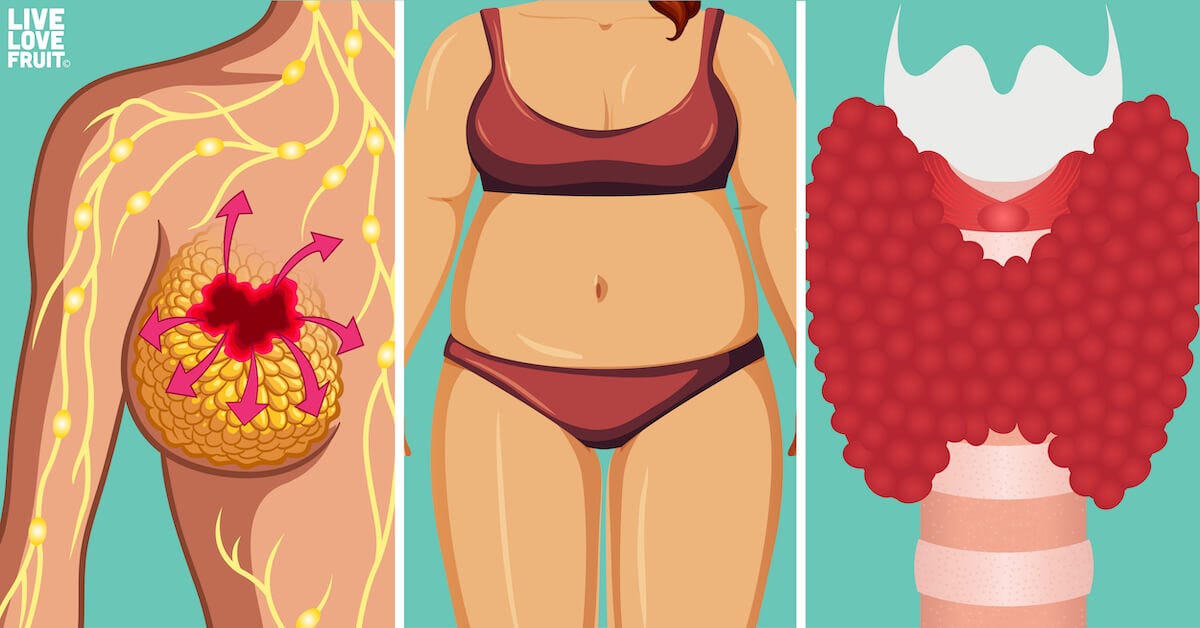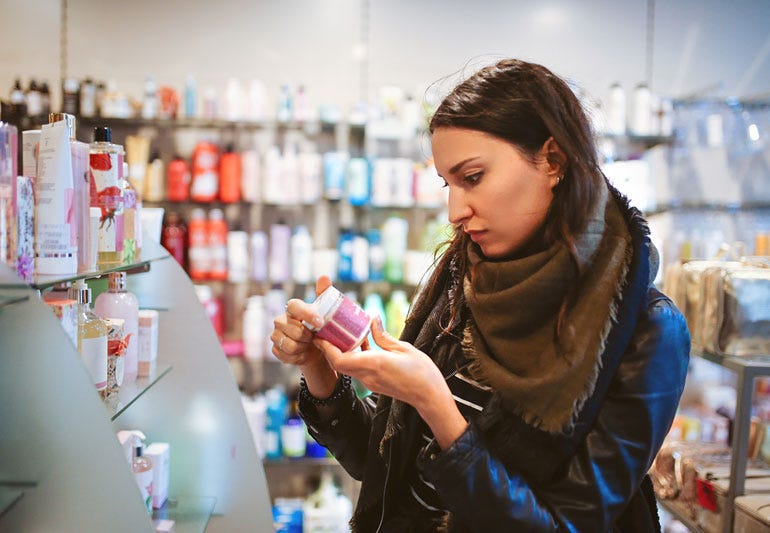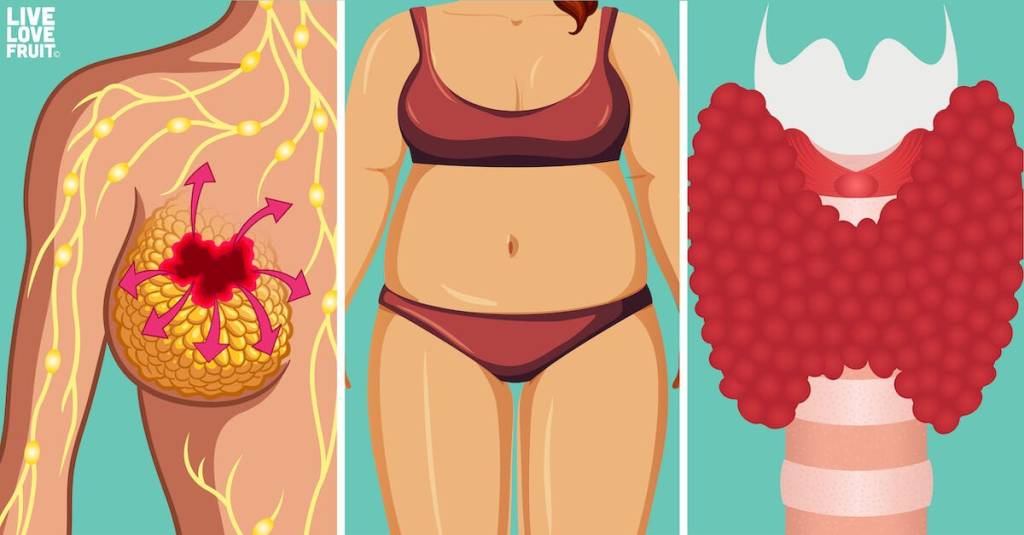There are approximately 1000 chemicals that have been shown to interfere with our hormonal system (EDC). These can increase, decrease, or alter our hormone levels.
We live in a toxic world these days. It seems as though chemicals are everywhere and can’t be escaped! They are found in the air we breathe, the water we drink, and the food we eat. Chemicals are so rampant in our environment, and it doesn’t look like that will be stopping any time soon. The 20th century saw chemical production and use triple from about 50 million tons in 1970 to about 150 million tons in 1995, and those numbers have only increased since then.
Why is this concerning? There is a specific category of chemicals that have been shown to interfere with our endocrine system, which is our hormonal system. These chemicals are known as Endocrine Disrupting Chemicals (EDCs). It is estimated that there are approximately 1000 chemicals that fall into the EDC category due to their interference with hormones
How Chemicals Are Affecting Our Hormones
EDCs have been shown to interact with our hormones in three different ways:
- They can either increase or decrease certain hormone levels.
- They can mimic our hormones, which our body will interpret as an increase.
- They can alter the natural production of hormones.

What Products Contain Endocrine-Disrupting Chemicals
While there are about 1000 known chemicals that are in the EDC category, below are the most common chemicals and where they are found:
– Butylated hydroxyanisole (BHA)
What it is: BHA is commonly used as a preservative in personal care products that contain oils or fats, such as lipsticks, eyeliners, and moisturizers.
What the research says: Studies in rats (the findings of which do not always apply to humans but can suggest areas for human research) have linked BHA to stomach cancer, damage to kidney cells, and the development of reproductive systems in males and females. Several groups consider it a potential human carcinogen, including the World Health Organization’s International Agency for Research on Cancer, the U.S. National Toxicology Program, and the California Office of Environmental Health Hazard Assessment, which compiles the state’s Proposition 65 list of harmful chemicals that businesses must warn customers about.
– Fragrance
What it is: Fragrance formulas are considered trade secrets, which means companies can hide any number of chemical ingredients under the umbrella terms “fragrance” or “parfum.” A product’s label can say “unscented” and still have one of these terms in the ingredient list because some fragrance compounds may be used as dyes, solvents or stabilizers for active ingredients or for masking other undesirable smells in a product.
What the research says: According to the International Fragrance Association, there are more than 3,600 chemicals used in fragrance mixtures around the world. These include chemicals that environmental exposure researchers and toxicologists agree should be avoided, such as benzophenone, BHA, naphthalene and phthalates. Other ingredients in fragrances can trigger skin allergies, eczema, nasal irritation and asthma. Studies on some of the chemicals in fragrances, such as diethyl phthalate and musk ketones, have also suggested that they can interrupt normal hormone function, which has been linked to ovarian failure and sperm damage.
– Parabens
What they are: Compounds that have “paraben” in their name, such as methylparaben and propylparaben, are another group of preservatives used in water-based products. Low concentrations of parabens are found in shampoos and conditioners, face washes, toothpastes and other cosmetics.
What the research says: Animal studies have shown that parabens tend to mimic the effects of the hormone estrogen, and in human studies paraben exposure has been linked to increased incidence of breast cancer in females, as well as the disruption of reproductive systems in males. California and Maryland have banned isobutylparaben and isopropylparaben in cosmetics, effective January 2025, but other types, like methylparaben and ethylparaben, will remain unregulated.
– Phthalates
What they are: Phthalates are a class of chemicals that are commonly found in a variety of vinyl plastics. They are also used in eyelash glues, as well as some makeup and other personal care products with fragrance.
What the research says: In 2008, after these chemicals were shown to disrupt hormone function and impair fertility, the U.S. Consumer Product Safety Commission restricted six types of phthalates in children’s toys and child care products. Many personal care product manufacturers have since phased out the direct use of phthalates. Two types — dibutyl phthalate, DBP, and diethylhexyl phthalate, DEHP — will be banned in California and Maryland.
– Triclosan
What is it: Triclosan is an antibacterial agent that has been used in hospitals for many years to keep surfaces germ-free. In recent years its use in consumer products has increased as there has been a desire to decrease human contact with bacteria. It can be found in detergents, soaps, skin cleansers, deodorants, lotions, creams, toothpaste, mouthwash, and dishwashing liquids. Triclosan is also in cutting boards, clothing, and plastics that go into furniture and toys.
What the research says: Triclosan has had an important role in hospitals where dangerous bacteria are common and there are many susceptible patients. However, the widespread use of triclosan in soaps and other consumer products does not have a proven benefit. For example, there is no evidence that triclosan provides any benefit over washing hands with normal soap and water. Concerns in the medical community have been raised about triclosan promoting the growth of resistant bacteria. As early as 2000 the American Medical Association stated that it may be wise to avoid triclosan and similar antibacterials in consumer products. The Mayo Clinic has expressed concern that triclosan cutting boards do not prevent the spread of harmful bacteria and thus do not take the place of separate cutting boards when handling high bacteria foods (e.g., raw meat).
Triclosan is classified as an endocrine disruptor because of its ability to interfere with the estrogen (female hormone), androgen (male hormone) and thyroid systems of the body. Emerging evidence indicates a link between triclosan and allergy in children. Children in the highest category of triclosan exposure had double the risk of being allergic to common allergens.

What to do:
- Read labels and avoid products containing phthalates.
- Choose products labeled “Phthalate-Free”, “BPA-Free”, and “Paraben-Free”.
- Avoid fragrances and opt for cosmetics labeled “no synthetic fragrance”, “scented only with essential oils”.
- Consult a database – You can search for a product by name or bar code on apps by the Environmental Working Group (EWG), Think Dirty, and Yuka to find ingredients of concern.
- Look for third-party certifications, such as U.S.D.A. Organic, COSMOS Natural, E.W.G. Verified, Made Safe, E.W.G. Verified, etc.)
- Learn more from other groups. The Environmental Working Group has important advice for reducing your exposure to EDCs, as well as the Endocrine Society, a professional, international medical organization in the field of endocrinology and metabolism; and the Pediatric Environmental Health Toolkit, useful for all parents as well as healthcare providers.
There are approximately 1000 chemicals that have been shown to interfere with our hormonal system (EDC). These can increase, decrease, or alter our hormone levels. Though concerning, my hope is that upon reading this article, you will feel informed and empowered, to become a more conscious consumer, and improve your well-being!
If you haven’t done so already, make sure to read Part 1 of this series, discussing Harmful chemicals hiding in everyday products, linked to cancer, reproductive and developmental problems.
Feel free to leave a comment below, about what you thought about this article, and if you have any insight to share! Expect an upcoming Part 3 of this article, diving deeper into Endocrine Disrupting Chemicals, and how to reverse the damage!
Thanks for reading! –Gabi

Leave a comment